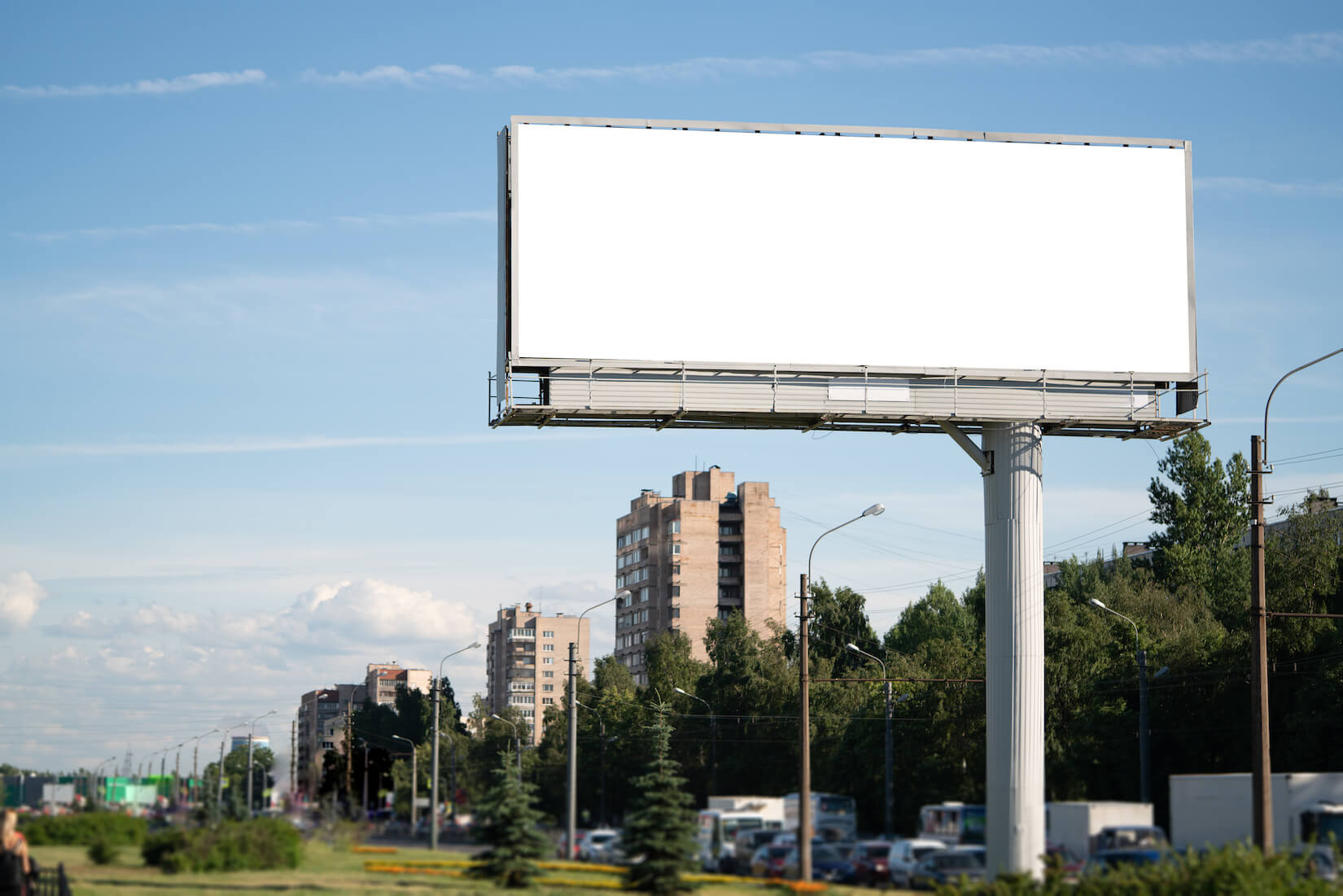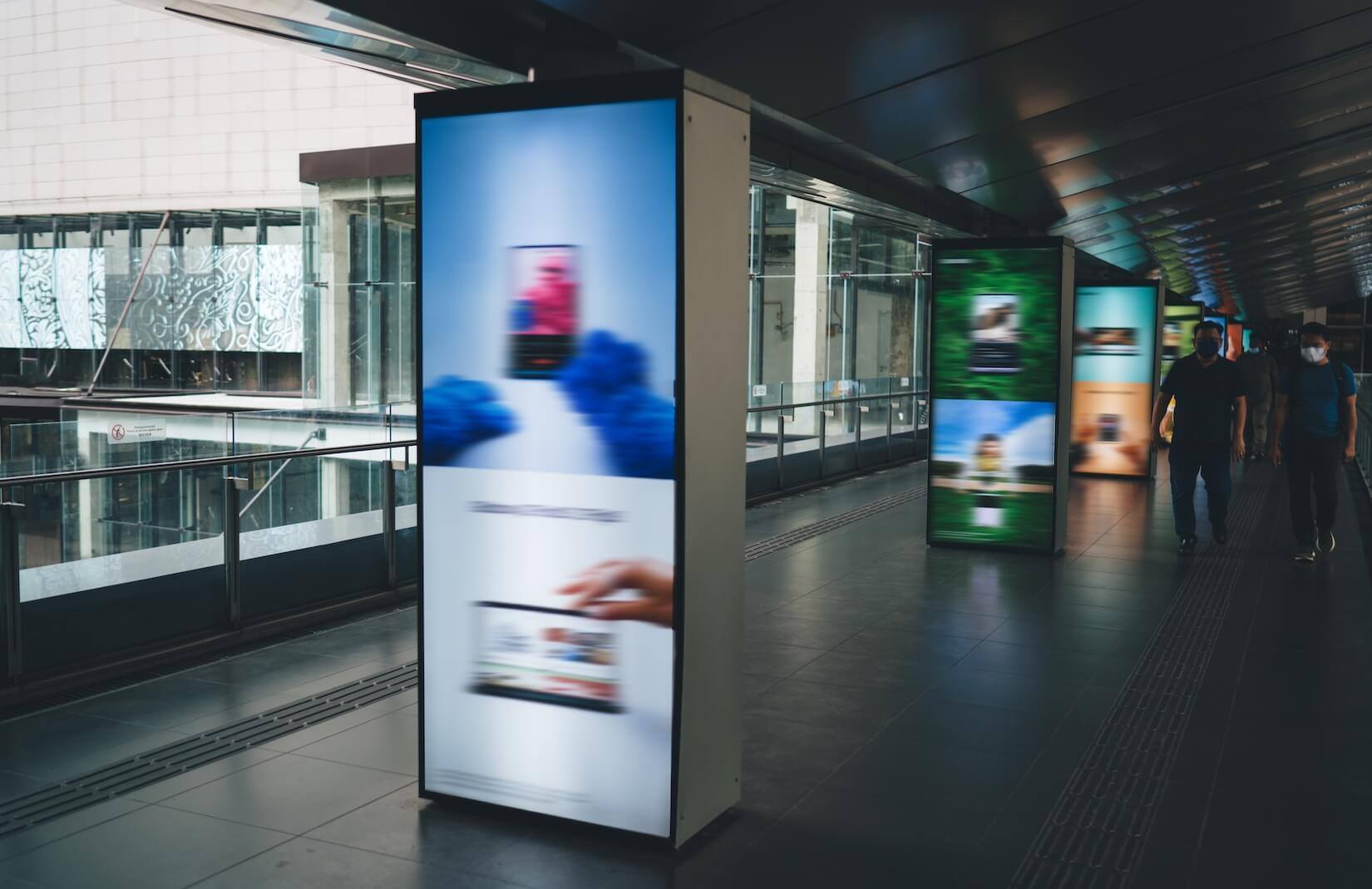
Identify locations, contact media owners, sign the contracts, and produce, install and maintain each ad. That’s what it took to launch every out-of-home (OOH) campaign before digital out-of-home (DOOH) and DOOH DSPs were created.
Sound like a ton of work? It was. In this blog, we cover everything you need to know about DOOH DSPs, from its definition and benefits to a step-by-step guide on how to use one.
What is a DOOH DSP platform?
DOOH DSP stands for digital out-of-home demand-side platform. With it, you can easily buy and manage out-of-home (OOH) ads. It takes the hassle out of working with multiple media owners for the same campaign, making OOH advertising more agile while opening the door to new targeting and creative opportunities.
How's it Different from an Online DSP?
While both use similar technology, these two DSP advertising platforms have three key differences:
- Where they operate: Programmatic advertising works the same for DOOH and online. The difference is where the ads are placed. Online DSPs focus on digital channels like websites and apps, while DOOH DSPs are all about outdoor spaces like billboards, place-based media, taxi tops and more.
- The ads they’re set up for: Online DSPs serve small banners and video ads. DOOH DSPs specialize in formats meant for physical locations, like large images, videos, and interactive content.
- The type of targeting: Online DSPs target based on digital signals like interest. DOOH DSPs offer similar targeting capabilities but often focus on location-based targeting, taking advantage of the contextual location of its screens to deliver relevant ads when and where they make the most impact.
The Benefits of DOOH DSPs
Streamline media buying
When launching your DOOH campaign on a DSP, you instantly gain access to hundreds of thousands of screens, making the ad-buying process less of a hassle. In short, it streamlines the buying process and provides real-time bidding, targeting, data, and management tools on the same platform.
Campaign consistency
Not only can a DOOH DSP help brands make a splash and connect with consumers in the physical world, but it also offers them an opportunity to extend online strategies into OOH for a cohesive brand experience. Just like you’d target "sports enthusiasts" in an online campaign, you can target them through behavioral patterns outside their devices.
Leverage contextual targeting
Relevant and engaging ads are essential for campaign success. With a DOOH DSP, you have the ability to place advertisements in the physical environment where they make the most sense. This increases the likelihood that your message resonates and captures consumer attention. The possibilities are endless; tailor your message based on location, demographics, time of day or even the weather.
Personalize creatives (with automation)
Imagine your ads seamlessly adapting to the place and the moment, changing messages and images based on data. That’s the power of dynamic creative. From displaying the nearest store locations to live countdowns, dynamic creative makes hyper-relevant, real-world campaigns possible.
Ad creatives can be updated in real-time, with no manual effort. Which allows you to personalize every screen depending on where it’s located, all with one creative template.
Visibility Into Your Campaign
DOOH DSPs go beyond just ad placement — they turn a traditional medium into something data-driven. With real-time reporting tools, you finally gain visibility into your OOH campaign beyond its location. DOOH DSPs provide metrics like impressions and distribution that allow you to fine-tune your strategies on the fly.
How does a DOOH DSP work?
The benefits of a DOOH DSP are clear, but how does it work, and how do you start a campaign? If you have access to a DSP or work with a partner, follow these six simple steps to run your campaign smoothly from start to finish.
Step 1: Set up flight dates and a budget
To begin, decide when your ads will be active, and allocate a budget that aligns with your advertising goals.
Step 2: Choose your targeting
A DOOH DSP allows you to tailor your campaign based on three key factors: your audience, the physical locations where your ads will be displayed, and the times they run. Targeting opportunities include:
- Geotargeting: Pinpoint the exact geographic areas where your audience is most present. Geotargeting ensures your message reaches the right people in the right place, whether it's a city, neighborhood or a pinpoint location.
- POI Targeting: Deploy ads within a specific location your target audience frequents. Imagine your brand's message strategically placed where your audience is most primed to react, whether that's near their office buildings, outside a festival, or intercepting them en route to a competitor's location.
- Dayparting: Set your ads to run when they are most relevant. For example, if your brand sells breakfast sandwiches, set the campaign to run only in the morning.
- Audiences: Define your audience based on demographics, behaviors, or interests. This can be done by integrating your own first-party data or by choosing one of the thousands of pre-built audience sections provided by data partners.
Step 3: Customize your campaign
With your targeting parameters in place, it's time to craft a compelling campaign. Unlike traditional OOH, a DOOH DSP has made dynamic content possible for outdoor advertising. You can modify content based on factors such as weather conditions, nearest store locations, upcoming events and so much more. It keeps your messages relevant and timely no matter what screen it appears on.
We recommend:
- Using dynamic content: Live data allows the ad to seamlessly adapt to the place and time of the event. Live sports scores, the countdown to your next sales event and directions to the nearest store are just a few possibilities.
- Including weather triggers: Respond in real-time to weather conditions. Matching your ad creatives with the right weather helps your ads feel like a natural part of the surroundings and speaks to the moment.
Step 4: Add on a measurement study
Those who want detailed insights into a campaign's performance should consider adding measurement tools. Track key metrics such as brand awareness, store traffic or conversion rates to gauge the success of your DOOH advertising efforts.
Measurement studies include:
- Brand Study: Measures awareness, consideration, intent and favorability.
- Foot Traffic Study: Measures the increase in foot traffic that was influenced by your campaign.
- Online Conversions Attribution: Measures how the campaign influenced online KPIs, from web conversions and behaviors to app downloads and in-app actions.
- Sales Lift Study: Measures how the campaign influenced your bottom-line sales.
Step 5: Launch and optimize
It's showtime! Launch your campaign and monitor its performance closely. Keep an eye on key metrics and be ready to make adjustments as needed. Optimizing along the way ensures your campaign adapts to the moment.
Step 6: Review campaign performance
After your campaign concludes, take the time to review its overall performance. If you choose to work with a partner — like Vistar Media — they’ll provide you with a wrap report on the campaign, including recommendations for the future. Learning from each campaign means you are continuously improving your DOOH advertising strategy.
Conclusion
Whether you're a seasoned outdoor advertiser or a newcomer, embracing the capabilities of a DOOH DSP opens doors to effective and innovative outdoor campaigns. The ability to adapt to the moment, engage with your audience in real time, and measure the impact of your campaign brings major value to your marketing strategy.
Interested in learning more about DOOH DSPs? Be sure to read about our programmatic marketplace, the largest and most trusted marketplace in OOH.


